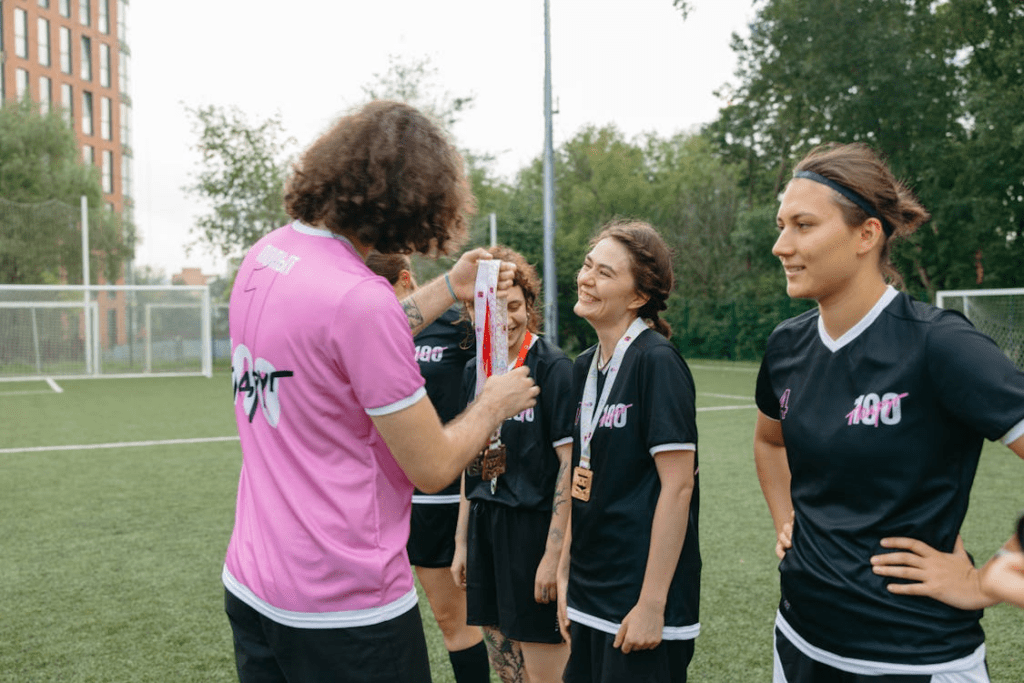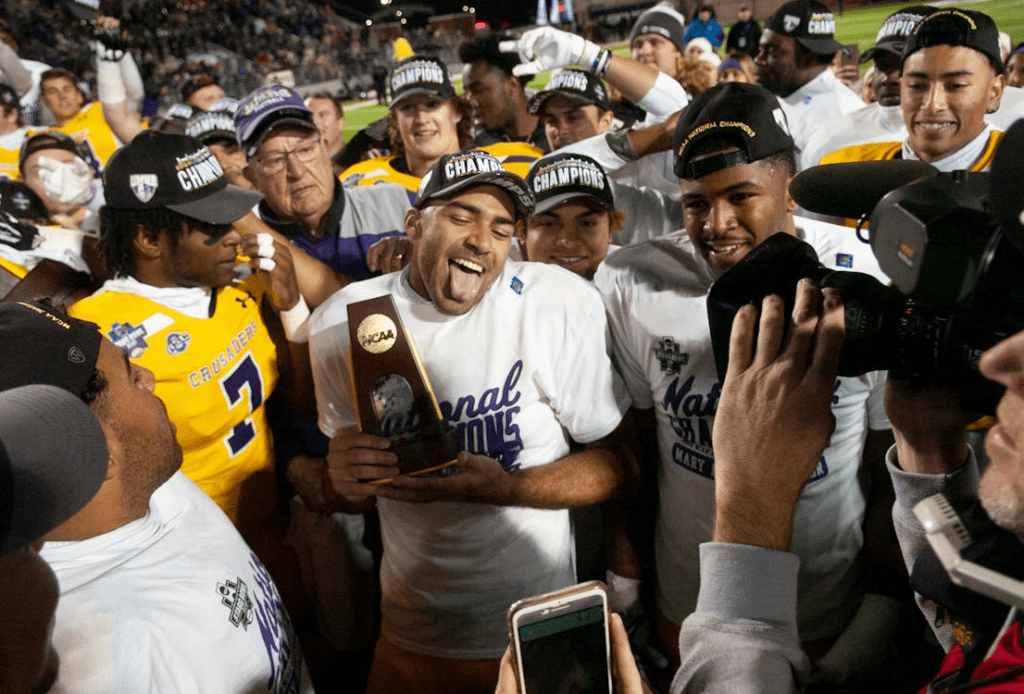The NCAA’s Name, Image, and Likeness (NIL) rules let college athletes make money while competing. But how does NIL actually work, and what should athletes know?
Key Takeaways
- NIL lets student-athletes earn money through endorsements, sponsorships, and more.
- Schools don’t pay athletes directly, but they can help navigate NIL deals.
- Taxes, contracts, and eligibility rules make NIL more complex than it seems.
- Financial literacy is key for athletes managing NIL income and expenses.
- Platforms and financial services help athletes handle NIL payments.
What Is NIL and How Does It Work?
What is NIL? It allows college athletes to profit from their personal brand. This includes sponsorships, social media deals, merchandise sales, and appearances. The NCAA doesn’t pay athletes, but businesses and brands can.
Athletes must comply with school, state, and NCAA rules. Some states restrict certain NIL activities. Schools may have their own guidelines, so athletes need to stay informed.
Many companies target athletes with large social media followings. Athletes with high engagement rates often receive more lucrative deals. Understanding NIL opportunities and legal obligations is important for making informed decisions.
Some athletes struggle with balancing NIL commitments and sports performance. Managing time effectively ensures they can handle both responsibilities. Schools often provide educational programs to help athletes manage these challenges.
Who Pays Athletes Under NIL?
Athletes earn money through businesses, brands, and personal ventures. Schools aren’t paying players directly, but some provide NIL resources. Payment structures vary—some athletes get lump sums, others receive ongoing payments.
Many athletes work with collectives or agencies to secure deals. These groups connect athletes with brands and help with contract negotiations.
Some companies offer performance-based bonuses in NIL agreements. Athletes may earn more if they achieve specific goals, such as winning championships. This incentivizes players to maintain strong performances on and off the field.
Businesses often use NIL deals to target local fan bases. Smaller companies collaborate with athletes who have strong community ties. This provides additional earning opportunities for athletes in various markets.

How Much Can Athletes Make?
How much is NIL worth? Earnings depend on the athlete’s popularity, sport, and social media presence. High-profile athletes make six- or seven-figure deals, while others earn smaller amounts through local sponsorships.
NIL deals range from free merchandise to million-dollar contracts. Many brands prefer athletes with strong social media followings, making engagement a key factor in earnings.
Athletes from revenue-generating sports typically earn more from NIL deals. Football and basketball players often see the highest earnings. However, athletes from non-revenue sports also benefit through niche sponsorships.
Merchandise sales are a growing NIL revenue stream. Some athletes launch their own clothing lines or branded products. Personalized merchandise helps athletes build their brand and increase NIL income.
The Role of Schools in NIL Deals
Schools don’t handle NIL payments but provide education and resources. Some partner with third-party platforms to help athletes navigate deals. Schools also help athletes stay compliant with NCAA and state regulations.
NIL collectives, often associated with schools, pool funds to help athletes secure deals. These groups play a big role in structuring NIL opportunities.
Some schools offer NIL workshops and financial literacy programs. Educating athletes on managing contracts and taxes is essential for long-term success. These initiatives help students avoid financial mistakes.
Schools also collaborate with brands to create NIL-friendly opportunities. By fostering relationships with businesses, universities can help athletes connect with trustworthy sponsors. This ensures safer and more structured NIL deals.
Managing NIL Money Wisely
Athletes receiving NIL payments need financial literacy. Financial aid disbursements and tax obligations add complexity. Some athletes face issues with taxes and contract terms if they aren’t careful.
Many work with financial advisors to handle earnings. Budgeting, saving, and understanding contract terms help athletes make the most of their NIL opportunities.
Tax planning is crucial for NIL recipients. Many athletes fail to set aside money for tax payments, leading to financial stress. Proper planning prevents unexpected tax burdens.
Some athletes use their NIL earnings for long-term investments. Cashing in on NIL by putting money into stocks, real estate, or business ventures can provide financial stability. Smart financial decisions now can set athletes up for future success.
NIL’s Impact on Athletic Departments
NIL affects more than just athletes—it also impacts schools. Some schools struggle with athletic department deficits as donor money shifts to NIL collectives instead of school funding.
Smaller schools may find it harder to compete for recruits. NIL opportunities vary by school, and larger programs often have stronger NIL networks.
Athletic departments must now balance NIL with traditional scholarship funding. Some schools allocate additional resources to help student-athletes maximize NIL earnings. This shift affects overall budgeting strategies.
Recruiting has changed due to NIL. Schools with strong NIL support attract top talent. Athletes often consider potential NIL earnings when choosing where to play.
The Future of NIL Payments
NIL rules are still evolving. Some lawmakers are pushing for federal NIL regulations to create consistency. Right now, each state has different rules, which can be confusing for athletes and schools.
As NIL grows, more financial services and platforms will help athletes handle earnings. New policies could change how schools, businesses, and athletes interact.
International athletes face additional NIL challenges. Visa restrictions complicate earning opportunities. Future policies may address these barriers to expand NIL eligibility.
More schools may start offering NIL education as part of their curriculum. Universities see the need for financial literacy courses focused on NIL management. This could become a standard part of athletic programs.

How to Get NIL Payments Safely
Not all NIL deals are equal. Some athletes sign bad contracts or fall for scams. Working with trusted agents, attorneys, or school advisors helps avoid problems.
Platforms designed for NIL payments ensure athletes get paid on time. These services help with tracking income and taxes.
Scammers often target student-athletes with fake NIL offers. Being cautious and verifying every deal is crucial. Seeking legal advice before signing contracts adds protection.
Athletes should also consider setting up separate bank accounts for NIL earnings. Keeping business and personal finances separate makes tracking income and expenses easier. This simple step helps with tax preparation and budgeting.
NIL and Per Diem Payments
Some athletes also receive student athlete per diems to cover travel and daily expenses. These payments differ from NIL earnings but are another key financial aspect for athletes.
Managing both per diem funds and NIL payments properly is important. Keeping track of expenses and understanding financial aid impact prevents potential issues.
Some schools automate per diem payments for easier access. Digital payment platforms streamline the process. This ensures athletes receive funds without delays.
Per diem funds may affect financial aid eligibility. Understanding how these payments interact with scholarships helps athletes plan their budgets. Schools often provide resources to assist with this process.
Conclusion
NIL payments have reshaped college sports, giving athletes financial independence. However, managing NIL deals properly requires financial knowledge and strategic planning.
Athletes, schools, and brands all play a role in this new landscape. With the right tools and guidance, student-athletes can make the most of their NIL opportunities while avoiding financial pitfalls.
If you’re managing NIL payments or university disbursements, check out Rellevate’s University Disbursements for solutions.



